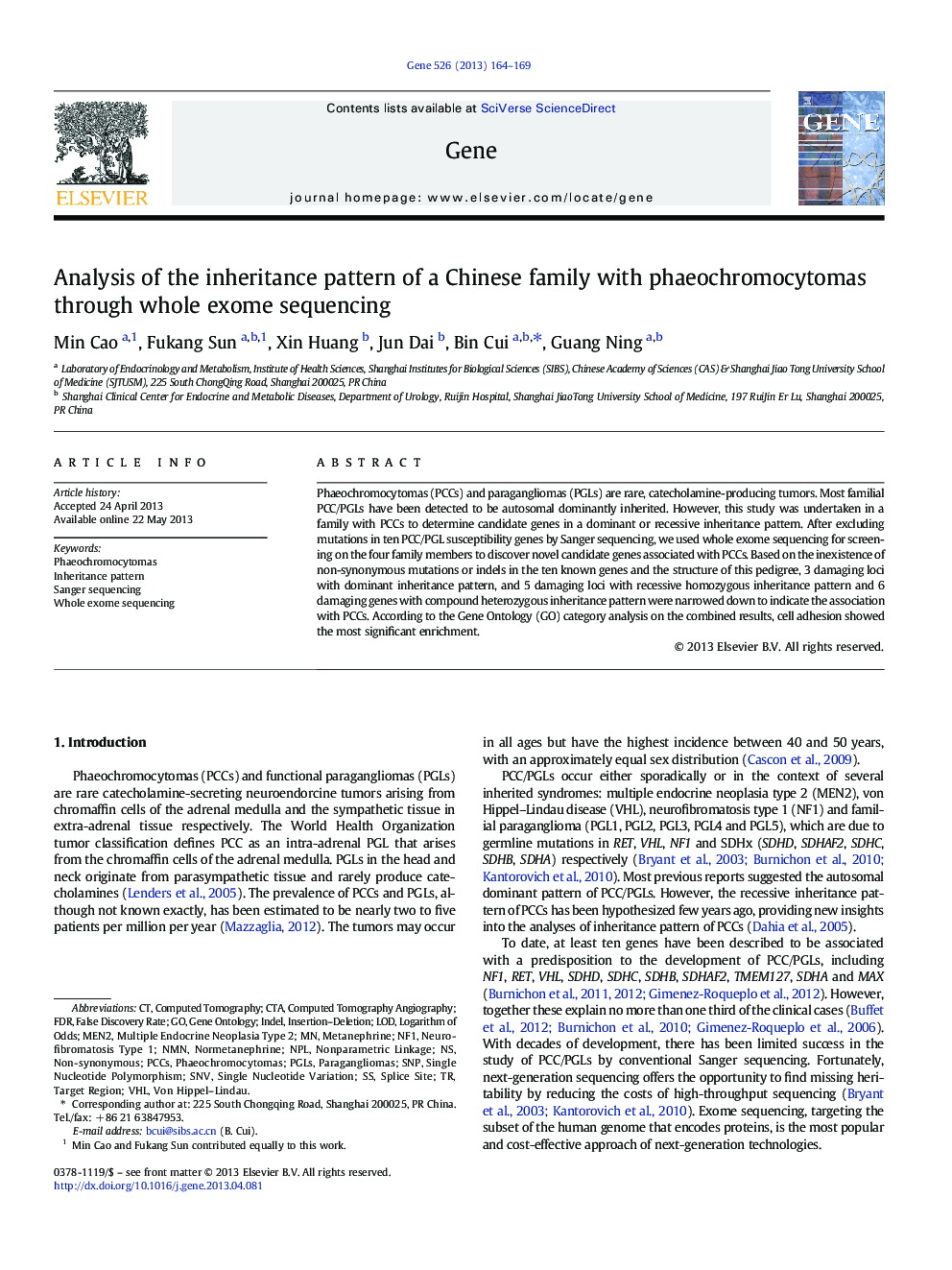| Article ID | Journal | Published Year | Pages | File Type |
|---|---|---|---|---|
| 5906354 | Gene | 2013 | 6 Pages |
Abstract
Phaeochromocytomas (PCCs) and paragangliomas (PGLs) are rare, catecholamine-producing tumors. Most familial PCC/PGLs have been detected to be autosomal dominantly inherited. However, this study was undertaken in a family with PCCs to determine candidate genes in a dominant or recessive inheritance pattern. After excluding mutations in ten PCC/PGL susceptibility genes by Sanger sequencing, we used whole exome sequencing for screening on the four family members to discover novel candidate genes associated with PCCs. Based on the inexistence of non-synonymous mutations or indels in the ten known genes and the structure of this pedigree, 3 damaging loci with dominant inheritance pattern, and 5 damaging loci with recessive homozygous inheritance pattern and 6 damaging genes with compound heterozygous inheritance pattern were narrowed down to indicate the association with PCCs. According to the Gene Ontology (GO) category analysis on the combined results, cell adhesion showed the most significant enrichment.
Keywords
NPLCTAPCCsInDelFDRMEN2NF1NMNPGLSVHLSNVComputed tomography angiographyNonparametric LinkageVon Hippel–LindauInheritance patternSplice siteSanger sequencingsingle nucleotide variationWhole exome sequencingcomputed tomographyLOD یا Limit of detectionNon-synonymouslogarithm of oddsmetanephrinefalse discovery rateneurofibromatosis type 1normetanephrineGene ontologyParagangliomasSingle nucleotide polymorphismmultiple endocrine neoplasia type 2SNP
Related Topics
Life Sciences
Biochemistry, Genetics and Molecular Biology
Genetics
Authors
Min Cao, Fukang Sun, Xin Huang, Jun Dai, Bin Cui, Guang Ning,
